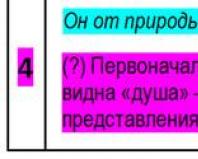Weber.vetonit pro gypsum (30kg) white gypsum superplastic plaster, reinforced. Technical characteristics of Vetonit plaster Weber Vetonit Pro gypsum 30 kg
Among wide selection plasters on the market are very popular building mixtures Vetonit. Product of this trademark has excellent quality and affordable price. In Russia, it is produced by Weber-Vetonit, a branch of the international construction group Saint-Gobain.
Types and scope
The Weber-Vetonit company produces powder mixtures for a wide range of construction works.
The following types can be found on the market:
- "Vetonit Gypsum plaster";
- Primer "Vetonit";
- "Vetonit Dispersion";
- "Vetonit TT";
- Vetonit EP.
Insert your text here
Depending on the type of plaster, it can be used for the following purposes:
- create decorative layer indoors or outdoors;
- level surfaces (walls or ceiling).
« Vetonit Gypsum plaster» used for leveling indoor surfaces. It is non-waterproof white plaster, which can be applied manually or by machine. IN end result a surface is formed that is ready for painting.
Primer "Vetonit"(or plaster mortar for leveling) are used for indoor work on concrete and brick surfaces.
« Vetonit EP» is a non-waterproof plaster mixture on lime- cement based. Most often used, like gypsum, to level large areas in one go. It is not recommended to be applied to weak lime and cement-lime substrates.
« Vetonit TT"is a waterproof cement-based plaster mixture. Most often used for indoor work. This mixture is universal and can be used for plastering most substrates.
On the market building materials there is also decorative plasters of this company. It is recommended that you carefully read the instructions on the package before purchasing in order to get a high-quality final result.
Specifications
Comparing the characteristics various types plaster, easy to make conscious choice in favor of this brand or another.
Compound
Depending on the type of plaster, its composition differs. Thus, Vetonit EP contains cement and lime. The main component of the most common Vetonit TT mixture is cement. The basis of “Vetonit T” is adhesive organic binders. “Vetonit L” is a plaster with a polymer binder. That's why it is necessary to first study the composition of the mixture.
Colors
This product is intended mainly for subsequent painting, therefore neutral colors: white, gray and light grey.
Layer thickness
Vetonit can be applied in a layer of 2 – 10 mm, maximum thickness is 3 cm. Please note that it may differ depending on the type of mixture. More details can be found in the following tables.
Adhesion (stickiness)
Plaster is different high level stickiness. On average, the adhesion strength is 0.5 MPa.
Frost resistance, moisture resistance
The dry powder is quite frost-resistant. He able to withstand 75-100 cycles of complete freezing and defrosting. Therefore, this product is recommended in regions with cold climates.
Insert your text here
Strength
The strength of different types of plasters differs slightly. So, the mixture is gypsum base It is less durable than cement-based. On average one month after plastering the surface can withstand a load of 6-8 MPa.
Having considered specifications we can come to the conclusion that Vetonit is indeed an ideal material for interior and facade plastering work.
More details about the most common types of mixtures can be found in the tables:
| Basic plasters "Vetonit". Specifications | |||
| Brand name | « Vetonit V» | « Vetonit T» | « Vetonit L» |
| Astringent | Cement | Organic glue | Polymer glue |
| Layer thickness – full level. (mm) | 1–3 | 1–2 | 1–2 |
| Layer thickness – partial leveling. (mm) | 1–5 | 1–5 | 1–5 |
| Fraction (mm) | 0,6 | 0,6 | 0,6 |
| Operating temperature (degrees C) | 5 | 10 | 10 |
| Water consumption (l/25 kg) | 7–8 | 7 | 7 |
| Viability (h) | 4 | 12 | 24 |
| Drying time (days) | 1 | 1 | 1 |
After studying the technical specifications, you can begin plastering work.
 Preparations for work
Preparations for work
It should be noted that the solution should be applied at a temperature from +5 to +30 degrees. But if there is an asterisk on the package or there is the word “winter”, this means that it can also be used when low temperatures from -10 degrees.
It is necessary to take breaks between applying layers for up to two days and only then proceed to the next stage. A week after completion of the work, the plaster acquires 50% strength.
Surface preparation
Surface preparation largely determines the final result.
The work order is as follows:
- Pre-clean the surface from dirt and level it;
- cut off protruding corners;
- all irregularities should be repaired.
You can strengthen the base with reinforcing mesh.
When plastering concrete surfaces It is advisable to treat it with a primer so that the concrete cannot absorb moisture from the mixture.
Preparation of the solution
To do this you need:
- pour a package (25 kg) of dry solution into a 5-6 liter container;
- mix the solution in water at room temperature;
- mix until a homogeneous consistency is obtained. You can use a powerful drill for this;
- After 10 minutes, stir the mixture again.
The plaster should be used within 3 hours.
Insert your text here
Working methods
Plastering work can be done manually and mechanically.
When performing work manually, you must:
- Apply the resulting solution to the pre-treated surface;
- sand with a sponge;
- fill in the depressions;
- level the surface.
If you need to apply several layers, it is better to let the first layer dry for two days, and then move on to the next one.
The procedure for working with Vetonit is no different from the procedure for working with other types of plaster.
Advantages
This plaster is universal.
Among the advantages are the following:
- frost resistance and water resistance;
- non-shrinkage hardening and good level of adhesion;
- possibility of plastering manually and mechanically;
- low consumption;
- moisture resistance;
- application on different types surfaces.
 The product can be used on most known materials - concrete, aerated concrete, ceramic or sand-lime brick, foam concrete and so on, preparing the base for subsequent finishing using tiles, glass or plastic slabs, as well as for applying putty.
The product can be used on most known materials - concrete, aerated concrete, ceramic or sand-lime brick, foam concrete and so on, preparing the base for subsequent finishing using tiles, glass or plastic slabs, as well as for applying putty.
Flaws
There are not many disadvantages and they are minor.
The main ones are:
- the plastered surface dries slowly;
- crumbles when sanding.
Due to its numerous advantages and ease of use, Vetonit is in demand in modern market building materials.
Taking into account the advice of professionals, you can avoid problematic situations.
Here are some of them:
- can be used to increase adhesion (stickiness) special solution“Vetonit Dispersion”;
- Vetonit cannot be used as a base for tiles;
- Tools and equipment must be cleaned immediately after each use.
Price
The price of Vetonit plaster is quite high. Depending on the type, the price may vary. The average price is from 400 rubles. for 25 kg. The product is packaged in packages of 5 or 25 kg. It is recommended to store in dry rooms in original packaging. Shelf life is 1 year.
More information about Vetonit products can be seen in the video:
Thanks to the use of modern microfiber in the production, weber.vetonit PROFI GYPS has high strength characteristics and special elasticity, which ultimately allows for high quality finishing surface.
- Basic leveling of walls and ceilings in dry rooms with normal humidity, as well as the kitchen, corridor, bathroom (except bathrooms);
- Leveling walls with a layer of up to 50 mm (locally up to 100 mm);
- Manual and mechanized application;
- Suitable bases:
- concrete, foam concrete;
- brick;
- plastered surfaces;
- gypsum surfaces.
SPECIFICATIONS
| Color | white* |
| Binder | gypsum |
| Aggregate | perlite |
| Recommended layer thickness, one application, mm | 5-50 (locally up to 100) |
| Mixture consumption, kg/m2/10 mm | 9-10 |
| Water consumption, l/kg | 0,45-0,55 |
| Water consumption, l/30 kg bag | 13,5-16,5 |
| Solution application time, minutes | 40 |
| Trimming time, minutes | 60 |
| Drying time (one layer 10 mm), days | 1-3 |
| Compressive strength, not less, MPa (28 days, +23C, relative humidity 50%) | 3 |
| Strength of adhesion to concrete, not less, MPa (28 days, +23C, relative humidity 50%) | 0.4 |
| Storage | 6 months from the date of production, if stored in original packaging in a dry place |
*Gypsum dry mixes can be of different types white. It depends on the natural impurities in gypsum stone. The color of the mixture does not affect its characteristics.
COLOR
Weight of packing: 30kg
INSTRUCTIONS FOR USE
Preparing the base
The base must be solid, clean, free from dust and dirt. Substances that weaken adhesion such as grease, dust, etc. must be removed.
Windows and other untreated surfaces must be carefully protected.
To improve adhesion strength plaster mixture with the base it is necessary to treat the surface with a primer weber.prim contact. After applying the primer, you must allow it to dry completely (drying time 24 hours). Avoid dusting the primed surface.
Preparation of plaster
Gradually pour a bag (30 kg) of dry mixture into a container with 13.5-16.5 liters clean water while stirring. Recommended water temperature + 20°C.
Mix using a drill with an attachment for 1-3 minutes until a homogeneous consistency is obtained.
During the process of applying the solution to the surface to be plastered, you cannot add water or dry mixture!
It is not allowed to add other components to the solution.
Application
Within 40 minutes after mixing, spread the prepared plaster mortar onto the surface with a trowel in a layer of 5-50 mm, locally up to 100 mm. Then level it using a zigzag motion.
When applying several layers, the second layer of plaster is applied without waiting for the first layer to completely dry (after 2-3 hours). Plaster ceilings only in one layer with a thickness of no more than 15 mm.
As soon as the plaster solution begins to set (approximately 60 minutes after mixing), level the surface with a metal trapezoidal lath or wide spatula, cutting off the excess and filling the recesses.
To get more smooth surface under decorative finishing(wallpapering, painting) the surface must be treated using finishing and super-finishing putties: weber.vetonit KR, weber.vetonit LR+, weber.vetonit LR Pasta.
CLEANING THE INSTRUMENT
For work, use clean tools and containers (contaminated tools and containers reduce the time of use of the plaster solution). After use, wash the tool with water.
Careful planning is necessary to achieve the best results. plastering work, taking into account the curing time gypsum plaster.
During work, the temperature must be above +10°C.
The water temperature for mixing the dry mixture should be in the range from +5°C to +30°C.
PRECAUTIONARY MEASURES
When working, you must use rubber gloves; avoid contact with skin and eyes; In case of contact with eyes, rinse big amount water; keep away from children.
DISPOSAL INSTRUCTIONS
The dry mixture and hardened material must be disposed of as construction waste. The material must not be discharged into the sewer. Dispose of the paper bag as regular waste.
GYPSUM PLASTER WEBER.VETONIT PROFI GYPS
White gypsum superplastic plaster.
PURPOSE:
Basic leveling of walls and ceilings in dry rooms with normal humidity, as well as in the kitchen, hallway, and bathroom. node (except bathrooms);
Leveling walls with a layer of up to 50 mm (locally up to 100 mm);
Manual and mechanized application;
Suitable substrates: concrete, foam concrete, brick, plastered surfaces, gypsum surfaces.
ADVANTAGES:
Reinforced with microfiber - up to 50 mm without cracks;
High quality finishing surface;
Easy to throw on and level;
Crack-resistant;
Superplastic when applied manually or mechanically.
INSTRUCTIONS FOR USE:
Preparation of plaster:
Mix using a drill with an attachment for 1-3 minutes until a homogeneous consistency is obtained.
During the process of applying the solution to the surface to be plastered, you cannot add water or dry mixture! It is not allowed to add other components to the solution.
Foundation requirements:
The base must be solid, clean, free from dust and dirt. Substances that weaken adhesion such as grease, dust, etc. must be removed. Windows and other untreated surfaces must be carefully protected.
To increase the adhesion strength of the plaster mixture to the base, it is necessary to treat the surface using weber.prim contact primer. After applying the primer, you must allow it to dry completely (drying time 24 hours). Avoid dusting the primed surface.
Application:
Within 30 minutes after mixing, spread the prepared plaster mortar onto the surface with a trowel in a layer of 5-50 mm, locally up to 100 mm. Then level it using a zigzag motion.
When applying several layers, the second layer of plaster is applied without waiting for the first layer to completely dry (after 1-1.5 hours). Plaster ceilings only in one layer with a thickness of no more than 15 mm.
As soon as the plaster solution begins to set (approximately 40 minutes after mixing), level the surface with a metal trapezoidal lath or wide spatula, cutting off excess and filling the recesses.
To obtain a smoother surface for decorative finishing (wallpapering, painting), the surface must be treated using finishing and super-finishing putties: weber.vetonit KR, weber.vetonit LR+, weber.vetonit LR Pasta.
To achieve the best result, it is necessary to carefully plan the plastering work, taking into account the curing time of the gypsum plaster. During work, the temperature must be above +10 °C. The water temperature for mixing the dry mixture should be in the range from +5 °C to +30 °C.
PRECAUTIONARY MEASURES:
When working, you must use rubber gloves;
Avoid contact with skin and eyes;
In case of contact with eyes, rinse with plenty of water;
Gypsum plaster Weber.Vetonit Profi Gyps is used for basic alignment walls and ceilings in dry rooms with normal humidity, as well as the kitchen, corridor, bathroom (except bathrooms); for leveling walls with a layer of up to 50 mm (locally up to 100 mm). It allows you to create solid foundation under finishing due to the high strength of the composition. Plaster can be applied both manually and mechanically.
Used for application on the following substrates:
plastered surfaces;
gypsum surfaces.
concrete, foam concrete;
Gypsum plaster Weber.Vetonit Profi Gyps contains microfiber, which guarantees high strength, gives super plasticity by improving the viscosity and consistency of the solution, promotes uniform drying over the entire plastered surface and guarantees the absence of cracks. Due to finely ground gypsum, superplastic plaster is easier to level and smooth. The quality of the final surface is smooth and uniform.
Weber.Vetonit Profi Gyps plaster has increased adhesion to various reasons. It is easy to apply, does not slip, and minimizes the possibility of peeling in a thick layer.
Features of gypsum plaster Weber.Vetonit Profi Gyps:
Reinforced with microfiber - up to 50 mm without cracks.
High quality finishing surface.
Easy to throw on and level out.
Crack-resistant.
Superplastic when applied manually or mechanically.
Attention! Gypsum dry mixes can be of different white colors. It depends on the natural impurities in the gypsum stone. The color of the mixture does not affect its characteristics.
During work, the temperature must be above +10°C. The water temperature for mixing the dry mixture should be in the range from +5°C to +30°C.




